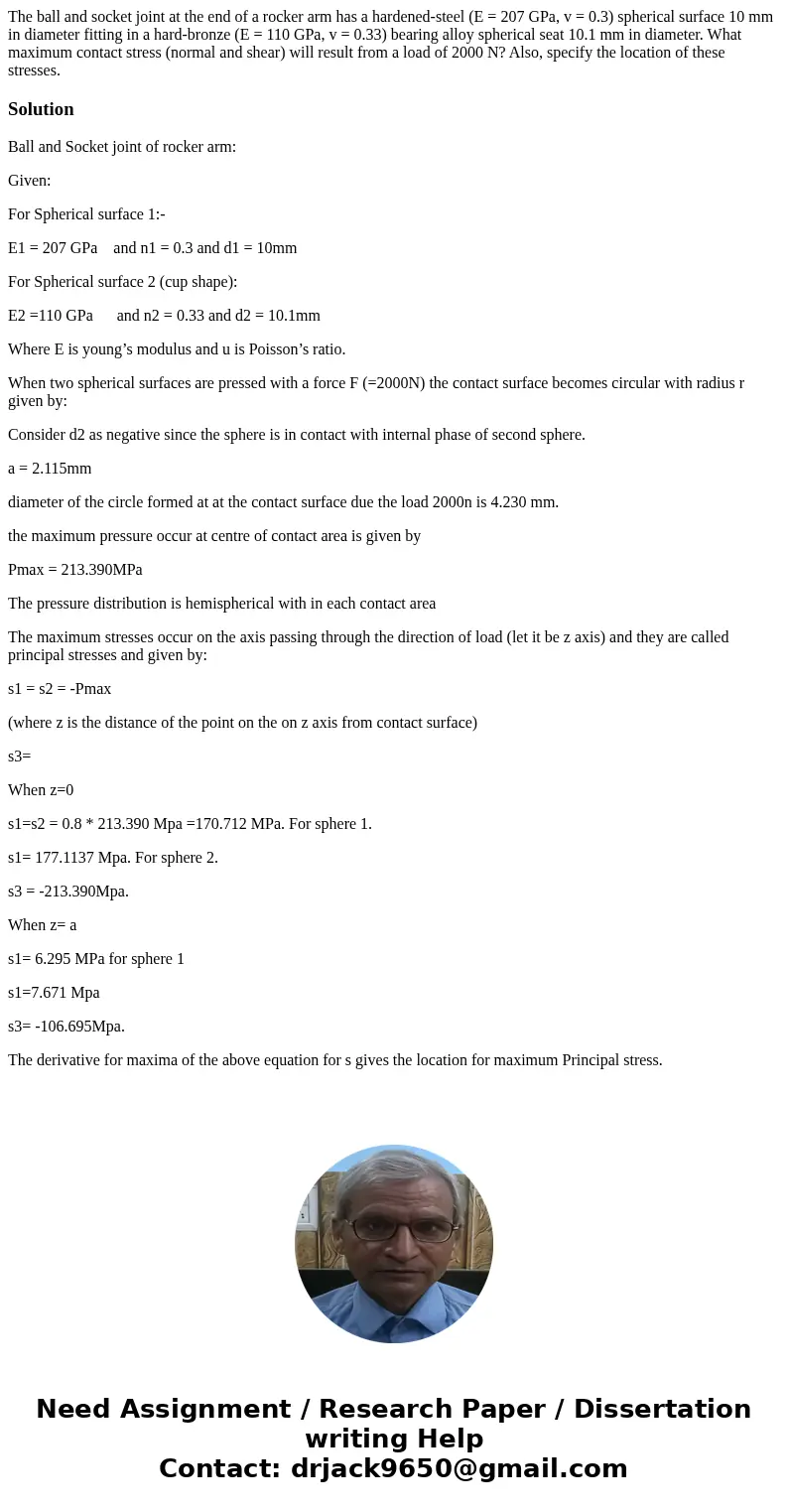The ball and socket joint at the end of a rocker arm has a h
Solution
Ball and Socket joint of rocker arm:
Given:
For Spherical surface 1:-
E1 = 207 GPa and n1 = 0.3 and d1 = 10mm
For Spherical surface 2 (cup shape):
E2 =110 GPa and n2 = 0.33 and d2 = 10.1mm
Where E is young’s modulus and u is Poisson’s ratio.
When two spherical surfaces are pressed with a force F (=2000N) the contact surface becomes circular with radius r given by:
Consider d2 as negative since the sphere is in contact with internal phase of second sphere.
a = 2.115mm
diameter of the circle formed at at the contact surface due the load 2000n is 4.230 mm.
the maximum pressure occur at centre of contact area is given by
Pmax = 213.390MPa
The pressure distribution is hemispherical with in each contact area
The maximum stresses occur on the axis passing through the direction of load (let it be z axis) and they are called principal stresses and given by:
s1 = s2 = -Pmax
(where z is the distance of the point on the on z axis from contact surface)
s3=
When z=0
s1=s2 = 0.8 * 213.390 Mpa =170.712 MPa. For sphere 1.
s1= 177.1137 Mpa. For sphere 2.
s3 = -213.390Mpa.
When z= a
s1= 6.295 MPa for sphere 1
s1=7.671 Mpa
s3= -106.695Mpa.
The derivative for maxima of the above equation for s gives the location for maximum Principal stress.

 Homework Sourse
Homework Sourse